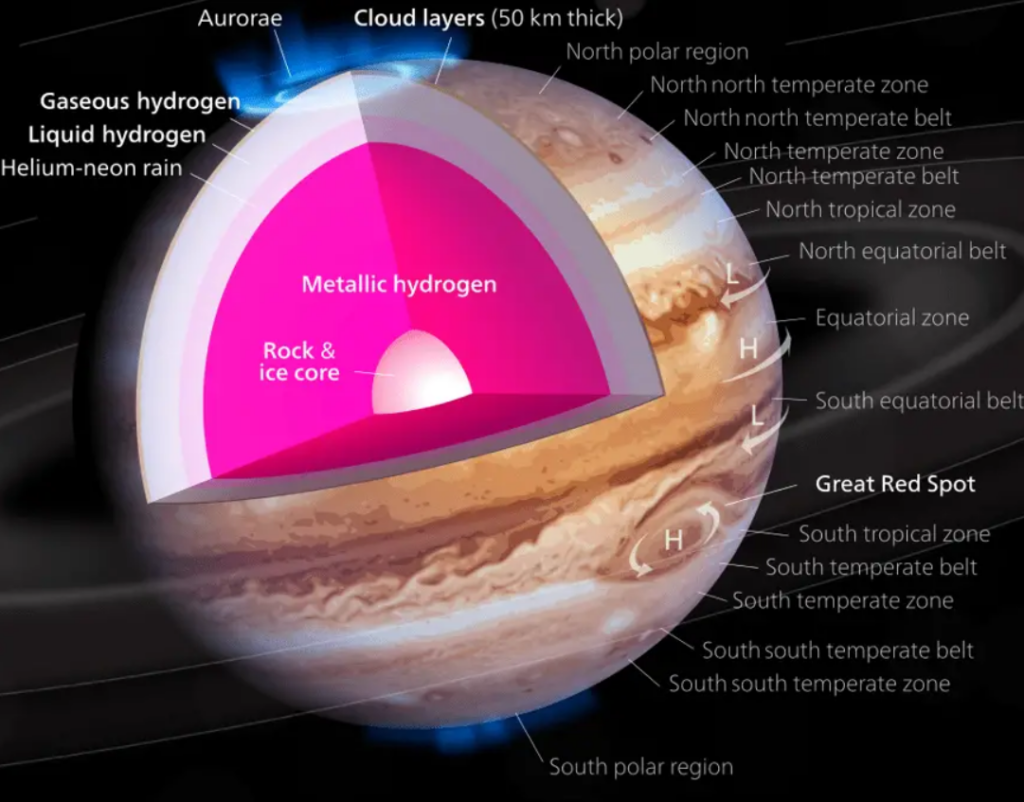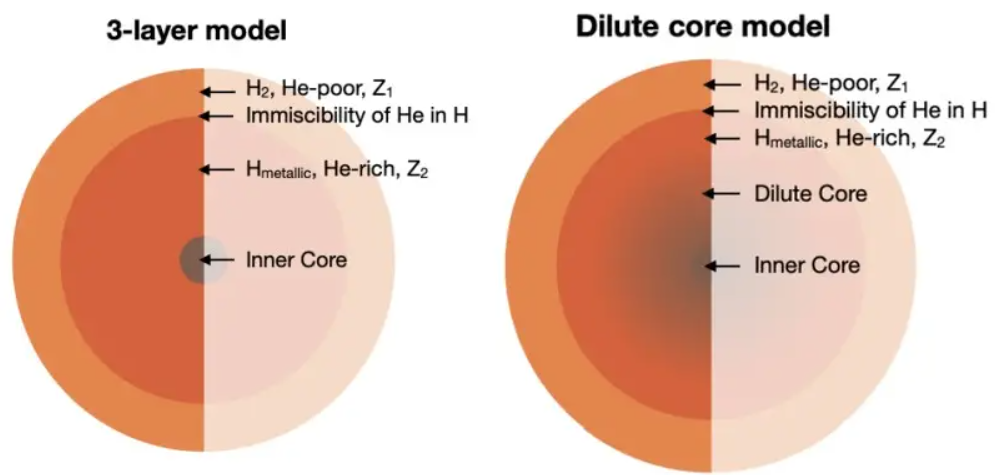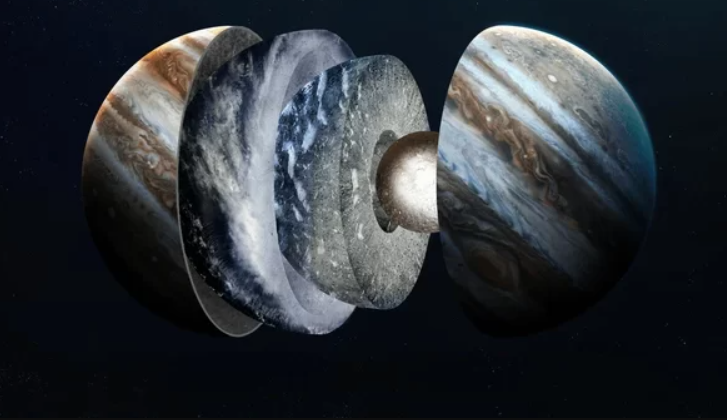Jupiter’s composition consists of a significant amount of rock and metal, reaching up to 9%. This suggests that during its early formation, Jupiter devoured numerous planets.
Recent research indicates that Jupiter’s metal content and distribution suggest a past of assimilating rocky planetesimals in its early stages.
The arrival of NASA’s Juno spacecraft at Jupiter in July 2016 has greatly advanced our comprehension of the planet’s origin and evolution. The Gravity Science instrument on Juno, in communication with Earth’s Deep Space Network, is crucial in this progress. Through the measurement of Jupiter’s gravitational field, scientists obtain deeper understanding of its makeup.
Jupiter’s formation began with the accumulation of rocky materials, followed by a rapid phase of gas accretion from the solar nebula. Over millions of years, it evolved into the massive planet we see today. However, the method by which Jupiter initially gathered rocky materials remains a significant question. Did it accrete larger bodies like planetesimals, or did it gather smaller, pebble-sized material? The answer to this question would impact the timescale of Jupiter’s formation.
The study titled “Jupiter’s inhomogeneous envelope,” published in the journal Astronomy and Astrophysics, sought to address this question. Conducted by Yamila Miguel, an Assistant Professor of Astrophysics at the Leiden Observatory & The Netherlands Institute for Space Research, the study delves into Jupiter’s internal dynamics.
While we often admire Jupiter’s surface features captured by JunoCam, such as its captivating clouds and storms, these images only provide a glimpse. The true secrets of Jupiter’s formation are hidden deep within its atmosphere, which extends tens of thousands of kilometers beneath its visible layer.
It is widely accepted that Jupiter is the oldest planet in the Solar System, yet the exact duration of its formation remains uncertain. By analyzing the metals present in Jupiter’s atmosphere through Juno’s Gravity Science experiment, researchers aim to unravel this mystery. Pebbles scattered throughout Jupiter’s atmosphere are key to understanding its formation, and the Gravity Science experiment offers valuable data on their distribution. Prior to Juno, detailed information on Jupiter’s gravity harmonics was lacking.

The research findings indicate that Jupiter’s atmosphere is more intricate than initially believed, showing a greater abundance of metals closer to the planet’s center. The overall metal mass present in Jupiter is estimated to be between 11 to 30 times greater than that of Earth.
Based on the gathered information, the team of researchers developed models to investigate the internal composition of Jupiter. These models, classified as 3-layer and diluted core models, provide insights into the planet’s formation mechanisms.

Lead researcher Miguel elaborates, “During their formation, gas giants like Jupiter accumulate metals through two processes: the gathering of small pebbles or larger planetesimals.” The high metal content in Jupiter indicates that it likely gathered planetesimals, as pebbles alone would not explain such abundance.
Moreover, the research suggests a lack of convection in Jupiter’s deep atmosphere, challenging previous assumptions. This discovery questions the idea that Jupiter is thoroughly mixed through convection.
The implications of this study go beyond Jupiter, offering insights into the examination of gaseous exoplanets and their metal content. The authors propose that metallicities deduced from distant observations may not accurately reflect the overall metal content of exoplanets.
The upcoming James Webb Space Telescope is expected to bring about more discoveries in the exploration of exoplanet atmospheres. Nevertheless, as shown by this study, a deeper understanding of the composition of giant gas planets necessitates more than just surface-level observations.
Do not forget to share your opinion with us to provide you with the best posts !




0 Comments